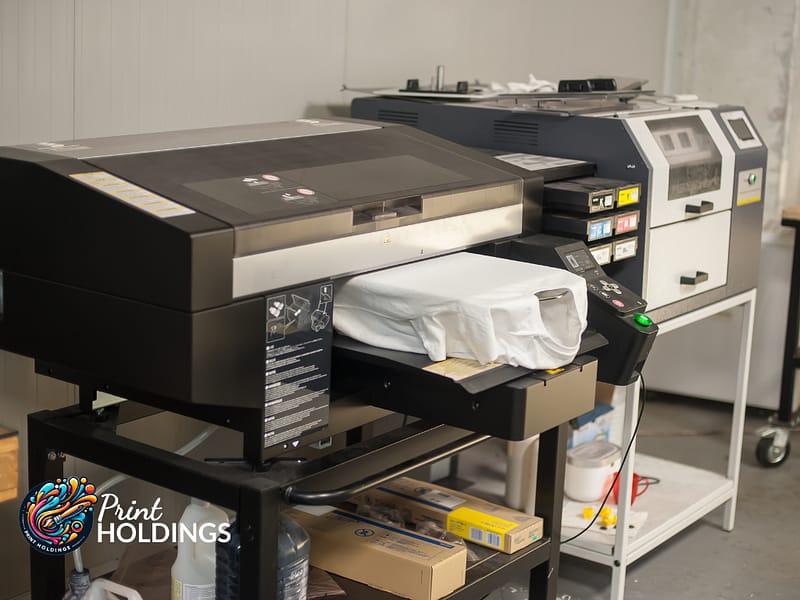Quality control is crucial in the print on demand in australia. It ensures that every product meets specific standards before reaching the customer. Given the competitive market, maintaining high-quality standards is essential for distinguishing your brand from others. Poor quality can lead to negative reviews, returns, and ultimately a loss in customer trust. Ensuring consistent quality helps in building a reputable brand that customers can rely on, fostering loyalty and encouraging repeat business.
The Impact of Quality on Customer Satisfaction and Retention
Quality directly influences customer satisfaction and retention. High-quality products meet or exceed customer expectations, leading to positive experiences and increased satisfaction. Satisfied customers are more likely to return for future purchases and recommend your services to others. In contrast, inferior quality products can result in dissatisfaction, returns, and damage to your brand’s reputation. By prioritizing quality control in your print on demand operations, you enhance customer satisfaction, build trust, and improve customer retention rates, which are vital for long-term business success.
Best Practices for Design and Proofing
Ensuring High-Quality Designs for Print on Demand
Creating high-quality designs is the first step in ensuring excellent print results. Use professional design software and ensure that all graphics are high resolution and correctly formatted for printing. Pay attention to color accuracy, as colors can appear differently on screen compared to the printed product. Work with experienced designers who understand the nuances of designing for print. High-quality designs not only look better but also contribute to the overall durability and appeal of the printed products.
The Role of Proofing in Preventing Printing Errors
Proofing is a critical step in the print on demand process, serving as a final check before production. It involves reviewing a sample of the product to ensure that the design is accurately represented and that there are no errors. Proofing allows you to catch issues such as alignment problems, color inaccuracies, and typographical errors before they become costly mistakes. Implementing a thorough proofing process can significantly reduce the risk of printing errors, ensuring that the final product meets quality standards and customer expectations.
Choosing Reliable Printing Production Partners
Key Factors in Selecting a Print on Demand Provider
Choosing a reliable print on demand provider is crucial for maintaining consistent quality. Key factors to consider include the provider’s reputation, the quality of their printing production equipment, their range of products, and their customer service. Look for providers with positive reviews and a track record of delivering high-quality products. Ensure they use state-of-the-art printing technology and offer a wide selection of materials and customization options. Good customer service is also essential, as it ensures any issues are promptly addressed and resolved.
Evaluating Print on Demand Services for Consistency and Quality
Evaluate potential print on demand providers by requesting samples of their work. Assess the print quality, material durability, and overall finish of their products. Consistency is key; the provider should be able to deliver the same high-quality results with every order. Additionally, consider the provider’s turnaround times and their ability to scale production as your business grows. By thoroughly evaluating these aspects, you can select a partner that aligns with your quality standards and business needs.
Pre-Production Checks for Print on Demand in Australia
Pre-production checks are essential to identify and rectify any issues before the actual printing begins. These checks should include verifying design files, ensuring color accuracy, and confirming material specifications. It’s also important to check the calibration of printing equipment to ensure it meets the required standards. Pre-production checks help in preventing errors that could lead to waste and additional costs, ensuring that the printing process runs smoothly and efficiently.
Monitoring the Printing Production Process for Accuracy
During the printing production process, continuous monitoring is crucial to maintain quality control. This involves regular inspections of the print output to ensure consistency in color, alignment, and print clarity. Implementing automated quality control systems can enhance accuracy and efficiency, allowing for real-time detection and correction of any deviations. By closely monitoring the printing production process, you can ensure that each product meets the high standards expected in the print on demand industry.
Ensuring High Standards in Towel Printing
Specific Quality Considerations for Towel Printing
Towel printing presents unique challenges that require specific quality considerations to ensure optimal results. The texture and absorbency of towel fabrics can affect the printing process and the final appearance of the design. It’s crucial to choose the right type of ink that can adhere well to the fabric and withstand frequent washing. Water-based inks are often preferred for their ability to penetrate the fabric without compromising the towel’s softness. Additionally, consider the density and weave of the towel material, as these factors influence the clarity and vibrancy of the print. Ensuring high-quality towel printing involves selecting the appropriate materials and techniques that enhance durability and visual appeal.
Testing and Verifying Towel Print Durability and Appearance
Before mass production, it’s essential to test the printed towels for durability and appearance. Conduct wash tests to ensure that the print remains intact and vibrant after multiple washes. Check for issues such as color fading, print cracking, and fabric damage. Verifying the print quality under various conditions, including exposure to heat and moisture, helps in assessing the overall durability. Additionally, inspect the printed towels for consistency in color and design. By thoroughly testing and verifying the quality of towel prints, you can ensure that the final products meet the high standards expected by customers.
Handling Customer Feedback and Quality Issues
Collecting and Analyzing Customer Feedback on Product Quality
Customer feedback is invaluable for maintaining and improving product quality. Implement a systematic approach to collect feedback through surveys, reviews, and direct communication. Analyze this feedback to identify common issues and areas for improvement. Pay close attention to comments related to print quality, durability, and overall customer satisfaction. By understanding customer experiences, you can make informed decisions to enhance the quality of your print on demand products.
Resolving Quality Issues and Improving Future Production
When quality issues arise, address them promptly to maintain customer trust and satisfaction. Develop a clear protocol for handling complaints and returns, ensuring that customers receive quick and fair resolutions. Use the insights gained from customer feedback to identify the root causes of quality problems. Implement corrective actions and update your quality control processes to prevent future occurrences. Continuous improvement based on customer feedback helps in refining production methods and enhancing product quality over time.
Leveraging Technology for Quality Assurance
Using Advanced Printing Technology for Quality Control
Advanced printing technology plays a crucial role in maintaining high quality standards in print on demand. Invest in modern printers that offer precise color calibration, high resolution, and consistent output. Technologies such as direct-to-garment (DTG) printing and sublimation printing provide superior quality for various products, including towels. Automated quality control systems can monitor print consistency and detect defects in real time. By leveraging advanced printing technology, you can achieve higher accuracy and reliability in your print on demand operations.
Software Tools for Monitoring and Improving Print Quality
Utilize software tools to enhance quality control in your printing production process. Quality management software can track production metrics, monitor equipment performance, and manage quality inspections. These tools provide real-time data and analytics, helping you identify and address quality issues promptly. Implementing software solutions for quality assurance enables more efficient monitoring and continuous improvement of print quality. By integrating technology into your quality control processes, you can maintain high standards and improve overall operational efficiency.
Continuous Improvement in Print on Demand Quality
Strategies for Ongoing Quality Improvement in Print on Demand
Adopting a continuous improvement approach ensures that your print on demand operations consistently meet high quality standards. Regularly review and update your quality control procedures based on new industry practices and technological advancements. Encourage feedback from employees and customers to identify potential areas for improvement. Implement small, incremental changes to refine processes and enhance product quality over time. By fostering a culture of continuous improvement, you can adapt to changing market demands and maintain a competitive edge.
Training and Development for Maintaining High Standards
Investing in training and development is essential for maintaining high quality standards in print on demand. Provide ongoing training for your team on the latest printing techniques, quality control methods, and customer service best practices. Encourage employees to stay updated with industry trends and advancements. Developing a skilled and knowledgeable workforce ensures that your team can effectively manage quality control and deliver exceptional products. Regular training and development initiatives contribute to a strong quality culture and support the long-term success of your print on demand business.








